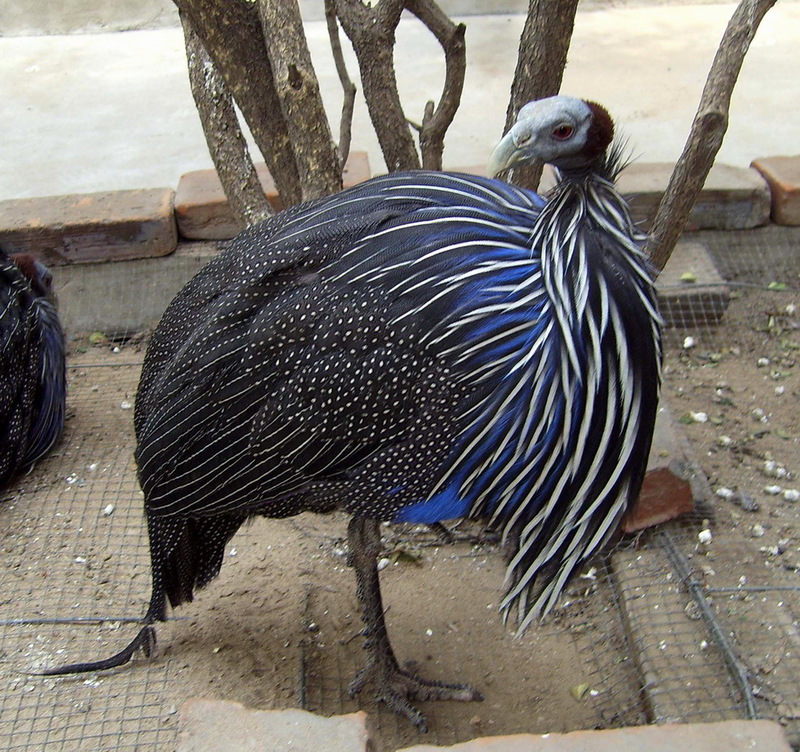Vulturine Guineafowl (Acryllium vulturinum) - Wiki Vulturine Guineafowl
From Wikipedia, the free encyclopedia
[Photo] ???珠???, Vulturine Guineafowl, Shizhao 2006年4月于北京???物???
The Vulturine Guineafowl (Acryllium vulturinum) is the largest and most spectacular of the guineafowl bird family, Numididae, and is the only member of the genus Acryllium. It is a resident breeder in northeast Africa, from southern Ethiopia through Kenya and just into northern Tanzania.
It breeds in dry and open habitats with scattered bushes and trees, such as savannah or grassland. It lays its usually 4-8 cream-coloured eggs in a well-hidden grass-lined scrape.
Vulturine Guineafowl is a large (61-71cm) bird with a round body and small head. It is longer in the neck, legs and tail than other guineafowl. The adult has a bare blue face and black neck, and although all other guineafowl have unfeathered heads, this species looks particularly like a vulture because of the long heads and neck.
The slim neck projects from a cape of long, glossy, blue and white hackles. The breast is cobalt blue, and the rest of the body plumage is black, finely spangled with white. The wings are short and rounded, and the tail is also short.
The sexes are similar, although the female is usually slightly smaller than the male. Young birds are mainly grey-brown, with a duller blue breast and short hackles.
Vulturine Guineafowl is a gregarious species, forming flocks outside the breeding season typically of about 25 birds. This species' food is seeds and small invertebrates. This guineafowl is terrestrial, and will run rather than fly when alarmed. Despite the open habitat, it tends to keep to cover, and roosts in trees. It makes loud chink-chink-chink-chink-chink calls.
| The text in this page is based on the copyrighted Wikipedia article shown in above URL. It is used under the GNU Free Documentation License. You may redistribute it, verbatim or modified, providing that you comply with the terms of the GFDL. |
